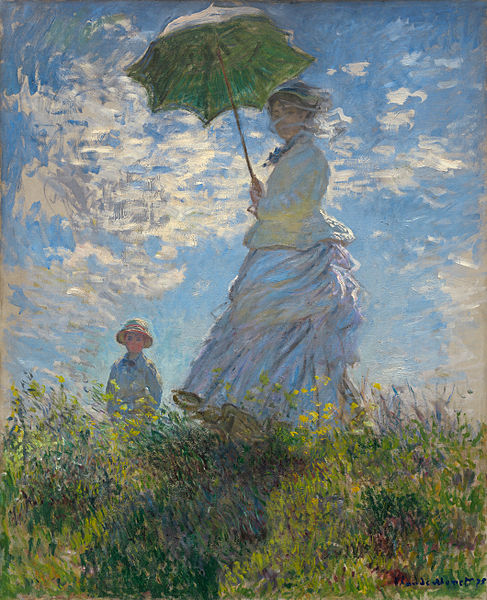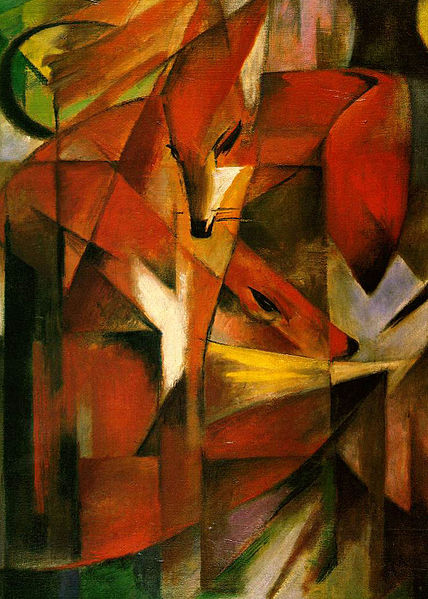Henri Matisse(31 December 1869 – 3 November 1954)
 |
| Henri Matisse, 1913 |
I don't know whether I believe in God or not. I think, really, I'm some sort of Buddhist. But the essential thing is to put oneself in a frame of mind which is close to that of prayer.
"Henri Matisse"
|
 |
Woman with a Hat, 1905.
San Francisco Museum of Modern Art |
 |
The Dance (Second Version), 1910
The Hermitage, St. Petersburg, Russia |
 |
The Luxembourg Gardens, 1901
The Hermitage, St. Petersburg, Russia |
|
Pablo Picasso(25 October 1881 – 8 April 1973)

Art is a lie that makes us realise the truth.
Pablo Picasso
|
 |
Child With a Dove, 1901
National Gallery, London, UK |
 |
Boy With a Pipe, 1905
Private Collection |
 |
Les Demoiselles d'Avignon (1907),
Museum of Modern Art, New York |
 |
Guernica, 1937
Museo Reina Sofia, Madrid, Spain |
|
Vincent van Gogh(30 March 1853 – 29 July 1890)
 |
Self-portrait, 1889
Courtauld Institute Galleries, London. |
When I have a terrible need of - shall I say the word - religion. Then I go out and paint the stars.
Vincent van Gogh
A religious zealot in his younger days, working as a missionary amongst poor miners in Belgium, but he questioned and then lost his faith when disgusted by the perceived hypocrisy of his theologian uncle and tutor, Johannes Stricker. He turned instead to art.
|
 |
The Church in Auvers, 1890
Musée d'Orsay, Paris |
 |
Pietà (after Delacroix), 1889
Van Gogh Museum, Amsterdam |
 |
Starry Night, Saint-Rémy, 1889
The Museum of Modern Art, New York |
 |
Irises, 1889
J. Paul Getty Museum, Los Angeles, California |
|
Eugène Delacroix(26 April 1798 – 13 August 1863)
 |
Self Portrait, c.1837
Louvre Museum, Paris |
French Romantic artist regarded from the outset of his career as the leader of the French Romantic school.
If one considered life as a simple loan, one would perhaps be less exacting. We possess actually nothing; everything goes through us.
Eugène Delacroix
|
 |
Massacre at Chios, 1824
Louvre Museum, Paris |
 |
Greece on the Ruins of Missolonghi, 1826
Musée des Beaux-Arts, Bordeaux |
 |
Liberty Leading the People,1830
Louvre Museum, Paris |
 |
Orphan Girl at the Cemetery, 1823
Louvre Museum, Paris |
|
Claude Monet(14 November 1840 – 5 December 1926)
 |
Self Portrait, 1886
Private Collection |
I am following Nature without being able to grasp her, I perhaps owe having become a painter to flowers.
Claude Monet
|
 |
Water Lilies, 1906
Art Institute of Chicago |
 |
Poplars at the Epte, c.1900
National Gallery of Scotland, Edinburgh, UK |
 |
Impression Soleil levant, 1872
Musée Marmottan Monet, Paris |
 |
Woman with a Parasol - Madame Monet and Her Son, 1875
National Gallery of Art, Washington, USA |
|
Antony Gormley(born 30 August 1950)

We are still bloody animals. We are still fixated on a Darwinian kind of drive pattern. We don't understand that the moment of enough was a long time ago already. It's really weird that with all our technology, with all our instruments, with all our intelligence, still we're really basic. Injustices continue as if we were just animals and our predatory nature and our territorial nature are stronger drives than the intellectual determinants or whatever the soul part of the human being is.
Antony Gormley
|
 |
Another Place, 1997
Crosby Beach, Merseyside, UK |
 |
Angel of the North, 1998
Low Fell, Gatehead, Tyne and Wear, UK |
 |
Quantum Cloud, 1999
London, UK |
|
Franz Marc(February 8, 1880 – March 4, 1916)
 |
Franz Marc, 1910; August Macke
Staatliche Museen zu Berlin, Gemäldegalerie,
Berlin, Germany |
German painter and printmaker, one of the key figures of the German Expressionist movement. He was a founding member of Der Blaue Reiter (The Blue Rider), a journal whose name later became synonymous with the circle of artists collaborating in it.
I understand well that you speak as easily of death as of something which doesn't frighten you. I feel precisely the same. In this war, you can try it out on yourself - an opportunity life seldom offers one...nothing is more calming than the prospect of the peace of death...the one thing common to all. It leads us back into normal "being". The space between birth and death is an exception, in which there is much to fear and suffer. The only true, constant, philosophical comfort is the awareness that this exceptional condition will pass and that "I-conciousness" which is always restless, always piquant, in all seriousness inaccessible, will again sink back into its wonderful peace before birth... whoever strives for purity and knowledge, to him death always comes as a savior.
Franz Marc, 1916
Der Blaue Reiter was founded in Munich in 1911 by Marc and Kandinsky after they resigned from the Neue Künstlervereinigung München due to their differences of opinion with other members of the association. Marc and Kandinsky shared similar ideas on art: both believed that true art should possess a spiritual dimension. Kandinsky's views are outlined in his text Concerning the Spiritual in Art, which first appeared in 1911. For Marc the spiritual aspect of art was perhaps more concerned with representing the inner soul of a being; Kandinsky represented the spiritual by abstract means. Both felt that much of the art of their day lacked any such dimension and thus hoped that Der Blaue Reiter would create a spiritual revolution in art. In addition to Marc and Kandinsky, other members of the group included Macke, Münter, von Jawlensky, the Austrian artist Alfred Kubin, and the Swiss artist Paul Klee. Their work was not united by a particular style but by common objectives in their artistic production.
After mobilization of the German Army during World War I, the government identified notable artists to be withdrawn from combat to protect them. Marc was on the list, but before orders for reassignment could reach him, he was struck in the head and killed instantly by a shell splinter during the Battle of Verdun in 1916.
|
 |
Foxes, 1913,
Kunstmuseum, Dusseldorf, Germany |
 |
The Fate of the Animals, 1913
Kunstmuseum, Basel, Germany |
 |
| Deer in the Woods II, 1912 |
 |
Horse in a Landscape, 1910
Museum Folkwang, Essen, Germany |
 |
The Enchanted Mill, 1913
Art Institute of Chicago, Chicago, Illinois, USA |
|




































From "The Hero"
ReplyDeleteLord Raglan
Oxford University Press 1937
(According to Raglan, legendary heroes all conform to a mythic pattern, viz:)
"The hero's mother is a royal virgin; his father is a king, and often a near relative of his mother, but the circumstances of his conception are unusual, and he is also reputed to be the son of a god. At birth an attempt is made, usually by his father or his maternal grandfather (or the overlord of the realm), to kill him, but he is spirited away, and reared by foster-parents in a far country. We are told nothing of his childhood, but on reaching manhood he returns or goes to his future kingdom. After a victory over the king and/or a giant, dragon, or wild beast, he marries a princess, often the daughter of his predecessor, and becomes king. for a time he reigns uneventfully, and prescribes laws, but later he loses favour with the gods and/or his subjects, and is driven from the throne and city, after which he meets with a mysterious death, often at the top of a hill. His children, if any, do not succeed him. His body is not buried, but nevertheless he has one or more holy sepulchres".
Raglan applies this pattern applies in greater or lesser degree, to an enormous number or legendary heroes including: Oedipus, Theseus, Romulus, Heracles, Perseus, Jason, Asclepius, Dionysus, Apollo, Zeus, Joseph, Moses, Sigurd, Arthur, Robin Hood and ...
Spot the missing name!
Thank you for this lovely post. Given the number of French people listed, I'm wondering if the French are more likely to be atheists, or simply more likely to own up to it. As for Van Gogh, I would like to think he was an atheist, but I'm unable to verify it.
ReplyDelete